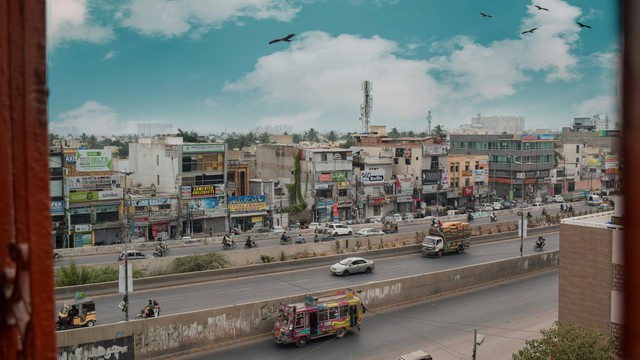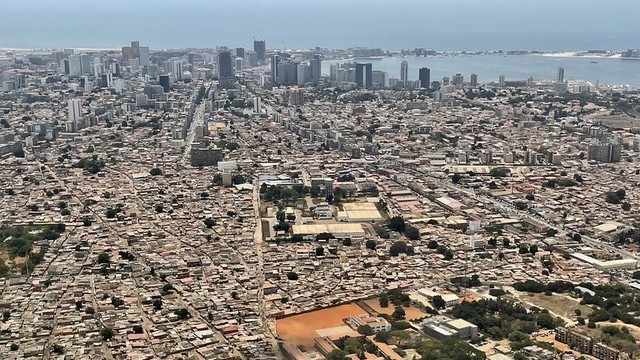Bringing urban refugees into local planning
Can we move from emergency to developmental response to the large and growing numbers of refugees living in urban areas by bringing them into local planning processes?


Around 3.6 million Syrian refugees have been granted temporary protection in Turkey. In Istanbul alone, there are more than 500,000 Syrians registered as well as tens of thousands of undocumented Syrian refugees (Photo: Rostyslav Savchyn via Unsplash)
Other blogs in this series have examined historical trends in urbanisation and unpacked the local, national and international factors that influence how populations are distributed. As David Satterthwaite notes, investment decisions by national, regional and global enterprises drive urban change by attracting economic migrants. So too do people’s individual decisions on whether they move and where to.
While at global level their numbers are not as significant, forced migrants are also contributing to urban change. Conflict and other forms of violence push people to move – becoming internally displaced people (IDPs) or refugees (if they cross a border).
The media and humanitarian actors often use images of remote camps as a visual shorthand for refugees and displaced people. But the majority of displaced people are in urban areas. Statistics on urban IDPs are unreliable, but the UN refugee agency UNHCR estimates that around 60% of all refugees globally are in towns and cities. This is up from approximately 15% in 2003 (PDF).
The Syrian refugee crisis has accelerated urbanisation of global refugee populations. Over 5.6 million Syrians have fled to neighbouring countries since conflict broke out in 2011, primarily into Lebanon, Jordan and Turkey. For a variety of political, historical and logistical reasons, camps were not built at scale and most refugees live in urban areas.
False assumptions
The response has been something of an anomaly, as these refugees are outside of camps but still receive assistance. Generally, despite popular beliefs, urban refugees receive very little or no assistance at all – either from the UN or the national government. They are often conveniently assumed to be ‘self-reliant’ – people who have made the choice to leave or bypass a camp, who must therefore be able to make it in the big city.
But as with economic migrants, a variety of push and pull factors influence refugees’ decisions on where to settle. Even in countries where refugees are legally required to live in camps, many will find ways to move to urban areas. Assumptions of self-reliance are blind to the harsh realities of urban living and the difficulties for many refugees in finding paid work.
IIED research in Kampala and Nairobi shows the struggle to access basic services, particularly healthcare. Refugees face language barriers in explaining their needs and medical conditions, and extortion from healthcare workers. In East Africa, refugees have been further stigmatised by politicians blaming neighbouring countries for ‘importing’ COVID-19.
Accessing housing as a non-citizen is also challenging – who you know and where you come from matter when negotiating access to shelter in an informal settlement. Refugees, particularly those without documentation, are vulnerable to predatory landlords who take advantage of the threat of deportation or fines from authorities.
A growing humanitarian caseload and diminishing global resources have led to increased emphasis among donor governments and humanitarian actors on refugee ‘self-reliance’ and is a central tenet of the UN’s Global Compact on Refugees.
Integrating self-reliance into local planning
But the concept of self-reliance needs a rethink. Many interventions designed to promote self-reliance focus on livelihoods, but a growing body of research points to non-economic factors.
Critically, any attempt to foster self-reliance at scale is likely to fail if it operates outside of local planning and governance frameworks. County governments in Kenya have recognised the positive contributions to the rural economy of refugees in Dadaab and Kakuma camps, and are now drawing up integrated development plans.
Nairobi has yet to follow suit – although finding ways to support and build on the economic activities of refugees in urban areas will be considerably more complicated and politically sensitive.
However, displaced people are moving to and changing urban areas. The gaze of humanitarian agencies and donor governments should be following them. The potential for self-reliance and the positive impacts on the local economy will be greater in towns and cities, given the number and range of opportunities available.
Returning to the Syrian refugee crisis, it is worth noting that many small and medium-sized towns underwent massive demographic shifts as refugees began to cross borders. In Lebanon, some urban populations more than doubled in a very short space of time. In Zaatari town, Jordan, residents increased from 5,000 to 10,000 between 2011 and 2016, and Al-Mafraq’s population doubled to 73,500.
Municipalities faced overloaded public services without additional resources, generating tensions between refugees and their ‘hosts’. Despite this, it took many years before the international community began to recognise this as a problem they should be dealing with, and even longer before assistance was actually channelled to local authorities.
This lack of attention to maintaining adequate levels of urban services reflects the emergency mindset of those who plan humanitarian response. Their approaches were developed in rural areas, often with encamped populations, and tended to target individuals or households rather than areas where people were settled find themselves.
Unpacking ‘self-reliance’
There is thus a double incentive for urban local authorities to give greater attention to the displaced people who have sought sanctuary among their constituents.
Firstly, displaced people often bring skills, experience and a determination to thrive. They have explicitly chosen to move to towns and cities to pursue opportunities available there, and in a supportive policy environment can make a real contribution to the local economy. While local integration for IDPs, given they are citizens, may seem more straightforward than for refugees, they are often marginalised, particularly if they come from minority ethnic groups.
Secondly, displacement crises potentially attract humanitarian resources that could contribute to local development. Much needs to change within the international aid system before we have a world where towns and cities are encouraged and supported to provide sanctuary to people displaced by conflict.
In the meantime, new research from IIED will examine the intersections between local development and the ‘displacement economies’ generated by refugees, returnees and IDPs.
We will ask refugees and other displaced people what being ‘self-reliant’ means to them, and look at the role that individual and collective well-being, alongside refugees’ and IDPs’ economic activity, play in achieving self-reliance in urban areas. And we will be working with federations of the urban poor to increase their focus on displaced people living in informal settlements, and to bring the views of these less visible populations into existing channels of engagement with municipal authorities.
We’ll be sharing our findings in the coming years.




